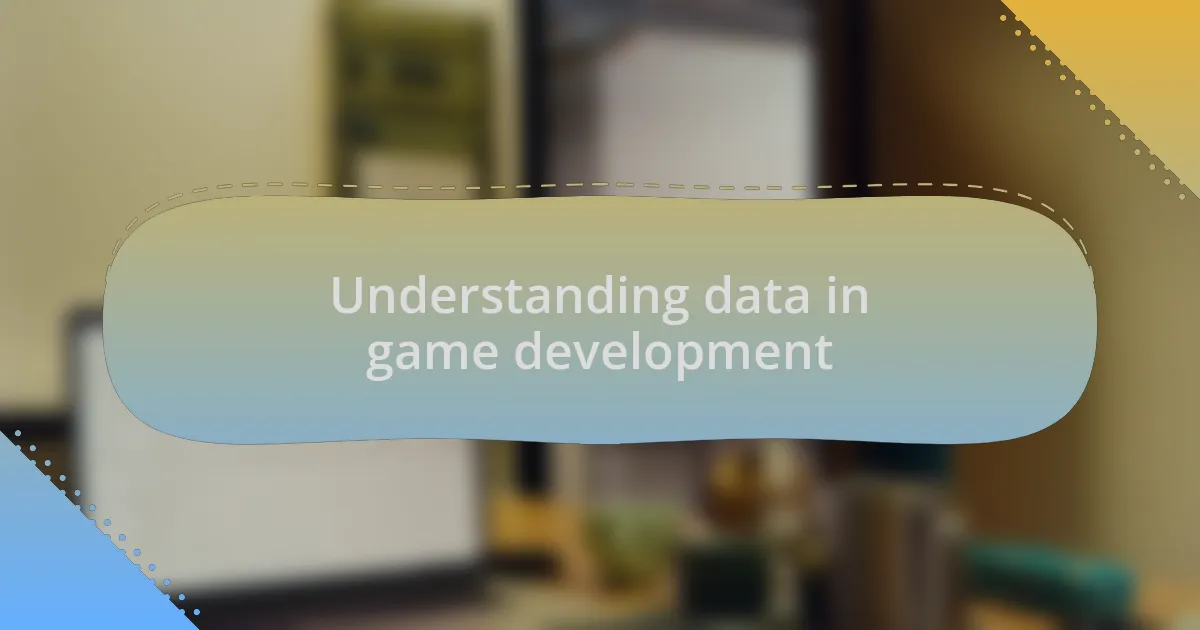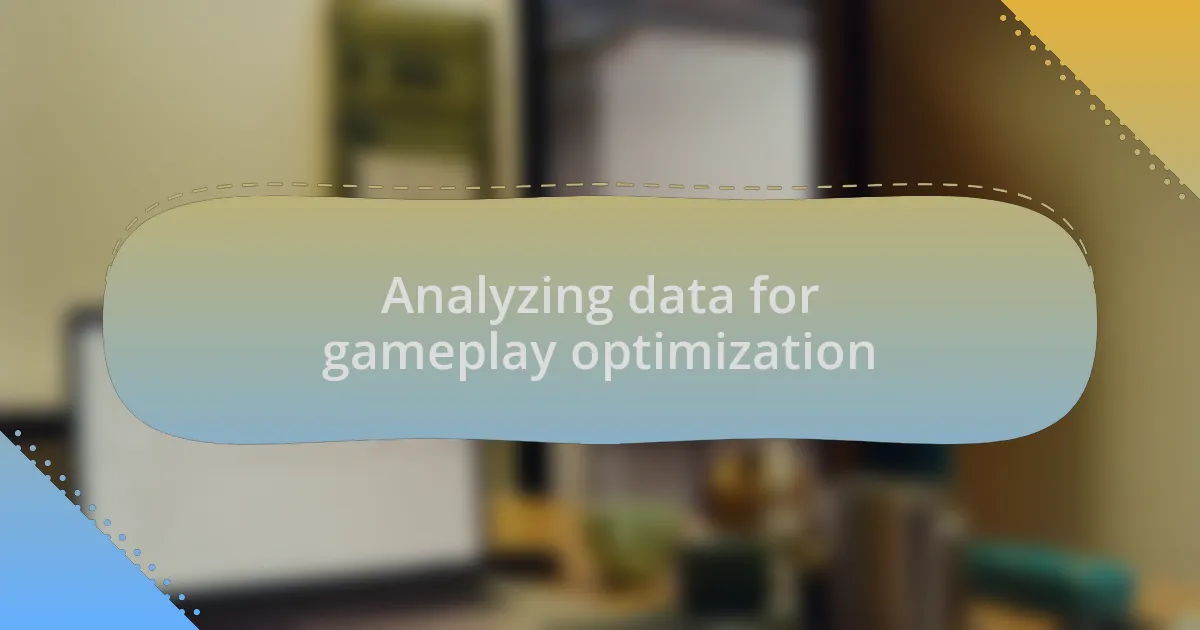Key takeaways:
- Data significantly enhances game development by informing design decisions and improving player engagement through analytics.
- Collecting in-game feedback directly from players can yield valuable insights that lead to stronger player relationships and better game design.
- Analyzing gameplay data, such as heatmaps and player demographics, allows developers to optimize game elements and cater to diverse player preferences.
- Implementing player feedback scoring helps prioritize updates and enhancements based on what players truly value.

Understanding data in game development
Data plays a crucial role in game development, influencing every aspect from design to player engagement. I remember when I first started using player analytics in my projects; it was like discovering a hidden treasure. Suddenly, understanding player behavior helped me make informed decisions that genuinely enhanced the gaming experience.
Have you ever wondered how games stay fresh and engaging? That’s where data becomes a game-changer. By analyzing user feedback, gameplay metrics, and even heat maps, developers can identify what keeps players hooked. I’ve found that small tweaks based on these insights can lead to significantly increased player retention.
The emotional connection players have with a game can often be quantified through data, whether it’s tracking in-game purchases or time spent on specific levels. I recently used A/B testing in a game I was developing. Seeing firsthand how different elements resonated with players offered a rewarding sense of clarity. It reinforced my belief that data is not just numbers; it tells a story that paves the way for better game creation.

Collecting data for game insights
Collecting data for game insights begins with understanding where to look for valuable information. In my experience, utilizing tools like Google Analytics or specialized gaming analytics platforms can unveil patterns that might otherwise go unnoticed. For instance, I recall a project where analyzing player drop-off points revealed frustrating game mechanics, prompting me to redesign sections of the game that were causing disengagement.
What surprised me during my data collection journey is that sometimes the most insightful data comes from in-game events rather than traditional analytics. One time, I embedded a feedback feature directly into the game. Players could share their thoughts on-demand, and their candid remarks transformed our perspective. It was incredible to see how this method not only enhanced game design but also created a stronger bond with the player community.
Even seemingly minor details can yield profound insights. I focus on collecting data at various stages of gameplay to capture the entire player journey. For example, I once tracked how players interacted with a new character I introduced. Their preferences helped me refine the character’s skills and attributes, ensuring it resonated with the target audience. This approach allows for continual improvement and a deeper understanding of what truly resonates with players.

Analyzing data for gameplay optimization
Analyzing gameplay data is where the magic truly happens. I remember diving deep into heatmaps that highlighted where players spent the most time. It was fascinating to see areas of the game that I thought were secondary suddenly emerged as hot spots for engagement. This analysis led to pivotal tweaks—adding hidden treasures or shortcuts—that not only enhanced gameplay but also kept players eager for more exploration. Have you ever considered how a simple visual could drastically shift player interaction?
Another valuable lesson I learned was the impact of player feedback scoring. I developed a system for rating game elements based on player satisfaction. This actionable insight shaped my decisions, pinpointing what resonated with them. It was like having a treasure map—it clearly directed me where to invest my time in updates. I was struck by how such a simple quantification method helped to prioritize enhancements that players genuinely wanted.
Additionally, comparing data across different player demographics revealed interesting trends. For example, I noticed that younger players preferred faster-paced gameplay, while older players enjoyed more strategy-focused challenges. Recognizing these distinctions allowed me to tailor different game modes that catered to diverse audiences. I often reflect on how these insights not only strengthened the game’s appeal but fostered a community where players felt their preferences were respected and valued. Isn’t it satisfying to feel that your player base is genuinely heard?